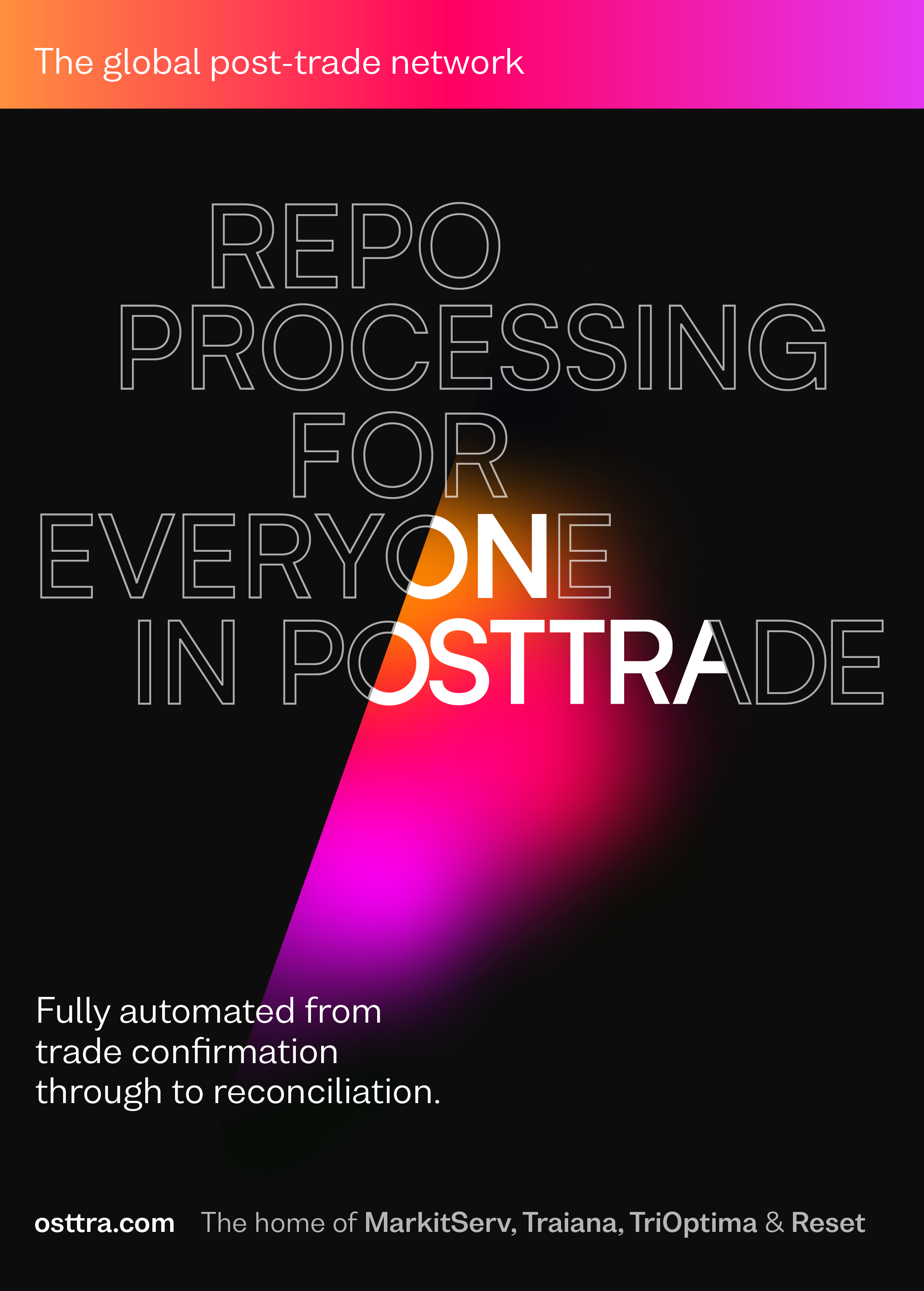Linklaters’ Hannah Patterson Smith and Deepak Sitlani speak to Bob Currie about the development of the law firm’s data-first contract automation platform and the benefits this can deliver to the securities finance community
CreateiQ is an end-to-end contract automation platform developed by Linklaters that enables users to draft, negotiate and execute contracts electronically. Data is stored on Linklaters’ servers, providing surety to clients that have a preference for on-premises data storage, rather than holding their legal contract data in a cloud-based service. A feature of the solution is its approach to structured data, giving users access to their contractual, negotiation and audit data in machine-readable form.
This platform started out as ISDA Create, which was launched in 2019, particularly to help firms respond to the challenges that they faced in implementing regulatory initial margin (IM) requirements. With the phased implementation of IM under the BCBS IOSCO uncleared margin rules (UMR) from 2016, a growing number of sell-side, and now buy-side, firms have been required to exchange IM under UMR.
ISDA Create’s library of available digitised documentation has since expanded to include the International Swaps and Derivatives Association (ISDA) Master Agreements (with embedded clause libraries), general amendment agreements to ISDA documentation, an interest rate reform documentation package to facilitate the transition to risk-free rates, and, most recently, variation margin credit support documentation (and related clause libraries). Now, ISDA Create sits as a module of the wider CreateiQ solution, allowing users to draft ISDA contracts, other standard capital markets documents like the GMSLA and own account documents like prime brokerage agreements, all on a single platform.
As an example, the Bank of New York Mellon took the decision to publish key custodial documentation on the platform in 2021, a step intended to bring greater efficiency to the negotiation process for custody agreements as firms prepare for UMR Phase 6, which is scheduled for September 2022 and will bring into scope buy-side firms with average aggregate notional amount (AANA) of US$8 billion or above.
With this development, market participants have been able to access BNY Mellon’s triparty and third-party account control agreements (ACAs) via the platform, enabling firms to negotiate and agree those documents online and to hold this legal data electronically on a Linklaters-hosted data server.
Commenting on these initiatives, Linklaters’ head of derivatives and structured products Deepak Sitlani says that it was important for the firm to provide a one-stop platform for more than just ISDA documents – and CreateiQ is now growing to meet this demand. This momentum has been extended through an agreement signed with the International Securities Lending Association (ISLA) in May 2022, enabling users to access ISLA documentation via the CreateiQ platform, including the General Master Securities Lending Agreement (GMSLA) 2010 and the GMSLA Security Interest 2018 documentation (which governs pledge-based securities lending transactions).
Linklaters managing associate Hannah Patterson Smith explains that the CreateiQ platform does a lot more than store legal data electronically. It enables users to draft contracts using a powerful and flexible toolset supported on the platform — offering an efficient way of collaborating across key participants within an organisation (e.g. risk and compliance, legal, and business teams) and marking up items for further discussion and approval. Additionally, it provides a mechanism for negotiating and executing contracts with external counterparties.
For ISDA Master Agreements and credit support documentation, as well as for ISLA GMSLA contracts, these are increasingly structured around the relevant clause library and, as it develops, the Common Domain Model (CDM), thereby delivering additional structure to electronically agreed legal documentation.
The CDM establishes a single, standardised digital representation of trade events and actions across the lifecycle of financial products. Linklaters notes that the CDM conversion service is integrated directly into CreateiQ, which enables the opportunity for structured legal data captured during the negotiation process to flow straight through to trading, risk management and operations systems in a standardised format, boosting automation rates and minimising the need for manual touch points.
This standardisation around the CDM will also enable collateral services providers, and other third-party service vendors, to facilitate operational processing of contractual terms negotiated through CreateiQ. For example, Acadia, a provider of collateral and risk management solutions, aims to deliver automated workflow to users from document negotiation in CreateiQ across its Agreement Manager service for data hosting and analysis. By applying a CDM-based representation of trade events, this encourages STP trade flow into Acadia’s collateral management solutions, enabling users to manage margin requirements in either a centrally cleared (via a central counterparty) or non-cleared (via bilateral exchange of margin following UMR procedures).
Hannah Patterson Smith is keen to emphasise, however, that in promoting standardisation this refers to standardisation of the contract formatting and drafting of common terms rather than an enforced standardisation of business outcomes. This arrangement provides flexibility to enable counterparties to build in their bespoke commercial requirements and to create the business contract of their choice.
By applying the ISDA- or ISLA-approved Clause Library alongside the CDM — providing standard-form versions of the most commonly negotiated elements in the legal agreement — this can introduce industry-validated clauses designed to minimise error or potential for inconsistent contract drafting. This will make the negotiating process more efficient by enabling legal and business representatives to concentrate on the most substantive issues, while providing a standardised set of clauses to guide widely used contract elements.
New ways of working
Financial services companies have been drafting legal contracts in physical form for many decades and only now is momentum truly building behind a digital contract negotiation and execution process. With this in mind, SFT inquired how difficult it was to convince potential users to sign up for an electronic documentation platform?
“In some cases, the dialogue was more exacting than we anticipated,” says a candid Deepak Sitlani. “The key to success is to have a strong forward-thinking advocate or sponsor of the project internally, a person or team who really believes this is the right way to proceed,” he says. Many firms did have someone who was eager to take ownership of the project and to promote it strongly within the organisation. In these cases, adoption and onboarding typically advanced very smoothly. But in cases when this was lacking, Sitlani notes that it could be much harder to persuade the organisation to change from their traditional ways of working.
From a Linklaters’ perspective, Sitlani says that the key selling point was undoubtedly the efficiency, cost and risk management benefits that are available to Linklaters’ clients through drafting, negotiating and executing legal documentation electronically. This centres on the speed of negotiation that is possible through the platform and the ease of collaborating across internal and external teams. By accelerating the negotiation process, this also allows firms to reduce the resource commitment that they require to support these activities.
In preparing legal agreements to be supported on CreateiQ, Linklaters has designed these agreements to maximise the contract data that can be captured on the platform. “To achieve this, it is essential to have lawyers that understand the crossover between legal context and technology,” says Patterson Smith. “A strength, at Linklaters, is that we are able to bring this combination of skills to the drafting and digitisation process.”
Significantly, through an MOU that ISDA and Linklaters have signed with S&P Global Market Intelligence, ISDA Create’s documents and functionality will be shortly available within S&P Global’s Counterparty Manager service, thereby giving firms the ability to access full details of their contractual relationships in digital form from a single location. Linklaters indicates that this creates an end-to-end solution for the lifecycle of a client relationship, from onboarding through to negotiating and executing trading agreements and then operationalising post-agreement processes.
As well as capturing newly negotiated legal contracts electronically on CreateiQ, the development team is also researching the use of natural language processing (NLP) technology to capture legal data from historical legal contracts and to hold this information electronically. As this technology continues to mature, Sitlani indicates that this would offer potential to capture electronic versions of contracts that were initially negotiated and signed in physical form. When combined with platform functionality that allows for updating, amending and restating contracts, this would give users a comprehensive digital view of their contracts, legacy and going forward.
Linklaters also continues to explore how a wider range of contract documentation can be held in digitised form on the platform. As a language-agnostic platform, this currently includes work to support the German Rahmenvertrag (DRV) and other jurisdiction-specific Master Agreements.
ISDA has recently released variation margin documentation onto ISDA Create, meaning that there are now more than 80 ISDA templates available on ISDA Create and CreateiQ, with dozens of other non-ISDA capital markets documents now available or soon to be added.
Moreover, in December, ISLA introduced a Master Confirmation Annex to accompany the GMSLA documentation. This provides a standard legal framework and set of terms that can be applied for non-standardised trade types such as evergreens and extendables. ISLA has indicated that the release of this MCA represents another step towards contract and clause standardisation as part of the industry’s moves to digitisation.
An eye-catching feature of CreateiQ is that its potential application extends well beyond financial services to a wide array of industries and commercial sectors. “We are exploring ways to scale this solution and have had discussions across each of our global offices and practice areas to discuss wider opportunities,” says Sitlani. Linklaters also identifies opportunities to scale this facility through its relationship with S&P Global, which has a large suite of users already onboarded across its corporate services solutions. “We are confident that this relationship will substantially expand access to the CreateiQ platform and the speed with which clients can be onboarded,” he concludes.
Take up of the platform already appears to be encouraging. Linklaters reports that 250 institutions are now using the platform, with a further 150 in the “sandbox” testing environment. The breakdown is currently 30 per cent sell-side firms, 55 per cent buy-side firms and 15 per cent service providers such as law firms, technology providers or other professional services. However, Hannah Patterson Smith indicates that for every sell-side firm currently being onboarded, there are typically more than two buy-side firms coming on to the platform. As a mark of this growth, contract volumes on CreateiQ have risen 400 per cent for H1 2022 relative to H2 2021.


